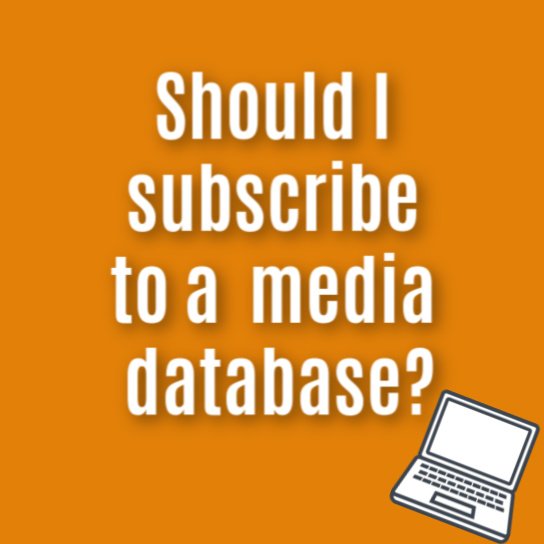You have a great product and you want to tell the world about it.
Social media is an amazing tool. So too is advertising.
But if you really want the buying public to believe your product is better than your competitors, earned media is the way to do it.
To put it simply, earned media is when a journalist gets excited enough about your product to shout about it through their particular media outlet. That could be The Sunday Times, it could be a niche blog. It deserves to be there. It hasn’t bought its way in.
But in order to earn your spot, you need to get your product in front of a journalist. And not just any journalist, the specific writer dedicated to your sector.
So how do you do it?
One way could be to build a list of all the media which is relevant in your sector – whether that be social media, trade press, newspapers etc – and comb through to see who is writing about and featuring the kinds of information relevant to your business.
Another, simpler, way is by using a media database.
A media database, such as Meltwater, Cision Gorkana or Vuelio, is a directory of journalists and influencers, divided up not only by media outlet, but by interest and specialism.
So, for instance, say you wanted to find influential writers who cover ‘architecture’. A search using a media database (in this case Cision) throws up 467 possible contacts across a wide range of media – from dailymail.co.uk and other national press, to trade outlets, freelancers and niche blogs.
If you wanted to drill down further to architecture writers, who have Twitter accounts – it would deliver 234 possibilities.
But more importantly, it holds contact information – direct email addresses, phone numbers, and social media handles. It’s what PR agencies, like jwc, use to build lists of contacts.
And if you want to start promoting your products to the right people, building your own list of media contacts is an essential.
A basic database will let you search its contacts and save and export your list. A more complex – and pricier – version will do this as well as distribute your marketing material and track who has opened and read your mail.
If budget is a factor, and when is it not, you’re looking at shelling out around £3,000 a year for access to the most basic of databases. If two people are going to be using it, you’ll need to buy an additional license which will bump up the cost further.
And while this might be a pretty heavy outlay, it’s important to remember a media database won’t just help you build a list, but a relationship with people who have a huge amount of influence. They will also include hints and tips on how people like to be approached – some prefer email, others a phone call. Some via a specific social platform.
We are specialists in the homes and interiors PR sector as we have built up and nurtured our contacts over years. Which means we’re on first name terms with most of the interiors editors and writers on and offline.
Each and every one of them started with a search for contacts in a media database. Usually we spot their name in an article we’ve read, and having a media database makes it a lot easier to get their contact details. There are other things to consider too. Before sending any press releases learning how contacts prefer to receive images is important – should we send high res versions right away or will that clog up their inbox? Were phone calls better on certain days? Where should we send samples?
Building a relationship meant building trust. And we had to make sure every time a journalist requested something from one of our clients we delivered. Quite literally in some cases – a 380-mile round trip to drop off some paint for an editorial photoshoot in World of Interiors.
A media database is the perfect starting point if you want to get your products in front of journalists, but it’s not an inexpensive one
But there are other ways you can build contacts without one.
If your business operates within a niche sector, such as the wedding industry for example, it might be worth blocking out a day of your time, buying every single wedding publication on the market and hitting the phones. Putting a call in to the editorial assistant to find out who your best contact is might just pay dividends.
Yes it’s time consuming, and a bit costly, but you will gain vital information that will kick start your PR campaign.
But do remember, however it is you get your contacts, it’s what you do with the information that’s important.
Taking the time to nurture a relationship is vital. Do this right and journalists will be lining up to get you – and your products – in their publication.
GDPR
Of course, the handling of personal data now falls under the remit of GDPR. But don’t fret. As long as you have the correct processes in place for handling data, GDPR still allows the unsolicited contacting of journalists, editors and influencers under the heading of ‘Legitimate Interest’.
There’s a great article from media database supplier Response Source here.

Get PR hooks every month for the homes & Interiors sector in the jwc monthly update mailer. If you haven’t subscribed you can do so below.
Every month we bring you insider hints and tips to help get the most out of you PR and marketing communications.
Sign up below:

